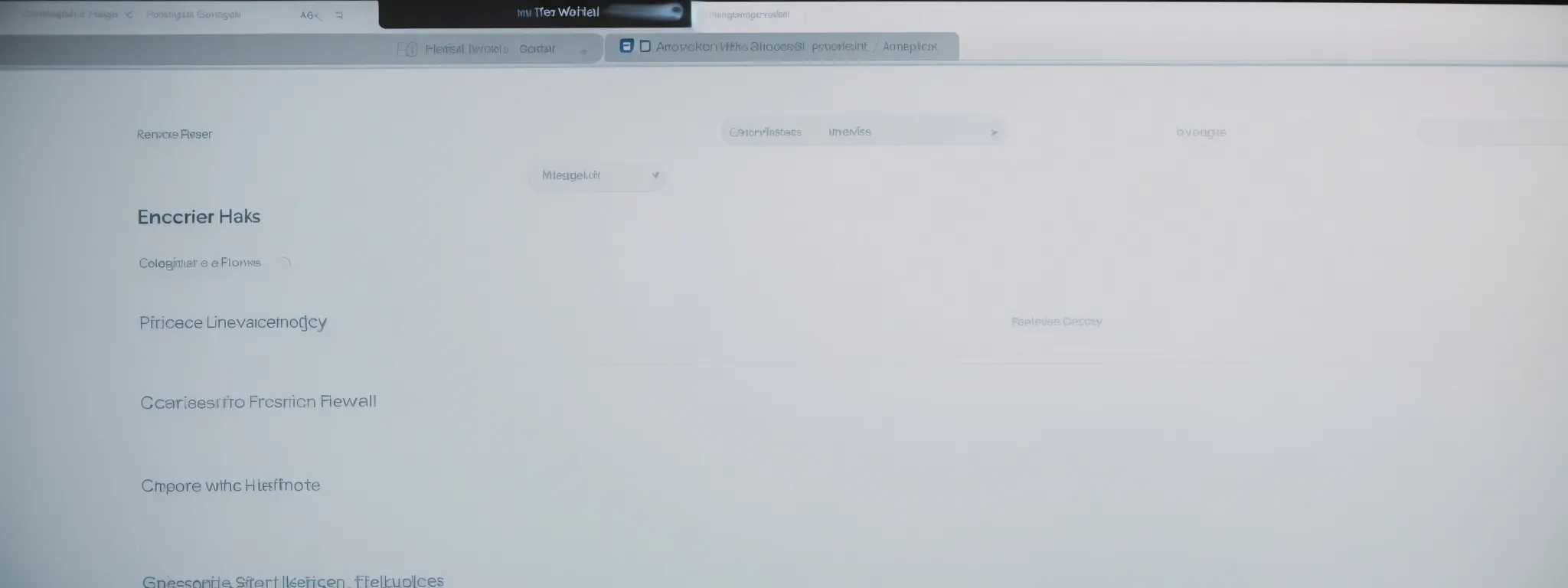How To Write a Title Tag
How to Craft the Perfect SEO Title Tag for Your Webpage Crafting the perfect SEO title tag is a subtle art, one that marries brevity with descriptive […]
How to Craft the Perfect SEO Title Tag for Your Webpage
Crafting the perfect SEO title tag is a subtle art, one that marries brevity with descriptive power, drawing the user in while satisfying search engine algorithms.
It sits at the crux of user experience and search engine visibility, a critical element in the quest to climb the SERPs.
An effective title tag serves as a succinct advertisement, a compelling beacon that signals relevance and ignites the curiosity of the searcher.
LinkGraph’s SEO services understand this intersection and offer expertise in optimizing this vital HTML element for maximum impact.
Keep reading to unlock the secrets of creating title tags that resonate with both your audience and the ever-evolving criteria of search engines.
Key Takeaways
- Crafting an Effective SEO Title Tag Is Essential for Improving a Webpage’s Visibility and User Engagement
- Title Tags Should Balance Keyword Usage With Compelling Language to Optimize Click-Through Rates and Adhere to SEO Best Practices
- LinkGraph’s SEO Services Leverage Strategic Keyword Inclusion and Data-Driven Insights to Optimize Title Tags for SERPs
- Regular Monitoring and Updating of Title Tags Are Critical to Maintaining Relevance and Competitiveness in Search Trends
- The Implementation of SEO Title Tags Should Align With Technical SEO Requirements and User-Friendly CMS Capabilities for Maximum Effectiveness
Understanding the Fundamentals of a Title Tag

A title tag stands as a critical HTML element, a beacon guiding both users and search engines to the essence of a web page’s content.
These succinct and potent headlines are not merely visible elements displayed at the pinnacle of a web browser tab; they also command a prominent presence in the search engine results pages (SERPs).
The right amalgamation of keywords within a title tag can elevate a website’s visibility, consequently enhancing click-through rates (CTR) and bolstering the brand’s prominence.
As businesses compete for digital dominance, they must pay heed to title tags, understanding their role and harnessing their potential within the vast realm of search engine optimization (SEO).
Define What a Title Tag Is
A title tag, an integral HTML element, encapsulates the thematic core of a web page and signals to the search engines the context of the content therein. It is this component that, when finely tuned with relevant keyword phrases, assists a page in surfacing on the search engine results, often acting as the first point of interaction between the brand and the searcher.
Entrenched within the HTML code, the title tag emerges as the specified title of an online document, displayed prominently as a clickable headline on SERPs and as the default name for a bookmark. By crafting a precise and compelling title tag, companies amplify their digital presence, catering to both user experience and the algorithmic preferences of search engines like Google.
Identify Where a Title Tag Is Displayed
Visibility of a title tag extends beyond the confines of the page content, as it prominently presents itself in the upper tab of a web browser, offering a quick reference for users navigating through multiple tabs. This strategic placement serves not only as a convenience for the user but also marks the identity of the page akin to a digital nameplate.
In the sphere of search engines, the title tag is thrust into the spotlight on the search engine results pages, where it functions as a defining element of the link that users click. A succinct and descriptive title tag can be the linchpin in capturing the attention of potential visitors, serving as a magnet for clicks amidst a sea of competing search results.
Recognize Its Significance for SEO
The efficacy of a title tag is measured not just by its capacity to entice a reader, but also by its impact on search engine rankings: a well-crafted title tag serves as a cornerstone of SEO strategy. It functions as a critical signal to search engines, conveying the relevancy of a webpage to a searcher’s query and facilitating a brand’s effort to target specific keyword phrases with precision.
| SEO Factor | Role of Title Tag | Impact on Search Engines |
|---|---|---|
| Relevancy | Encapsulates webpage content | Assists in page ranking for queries |
| User Engagement | Motivates clicks with compelling language | Improves CTR which can signal content value |
| Keyword Optimization | Incorporates targeted keyword phrases | Enhances visibility for specific searches |
As the initial encounter a potential visitor has with a website via SERPs, the title tag’s influence extends to user behavior, with CTR serving as a pivotal performance metric. This underscores the title tag’s dual role: satisfy the searcher’s intent while upholding the company’s SEO objectives, thereby magnifying the importance of this HTML element in digital marketing campaigns.
The Anatomy of an Effective SEO Title Tag

An effective SEO title tag is akin to the cornerstone of a building, providing a base upon which the visibility and success of a webpage are built.
This seemingly minor element of webpage construction holds immense power, influencing both a website’s search engine ranking and its potential to engage users.
As we dissect the key components and analyze exemplar title tags, it’s critical to understand how a meticulously optimized title tag can be a catalyst for heightened digital presence and improved search engine performance.
A carefully balanced blend of brevity, relevance, and keyword specificity forms the blueprint of an SEO title tag that not only garners attention but also embodies the essence of the webpage it represents.
Break Down the Key Components
An effective SEO title tag is crafted with precision, incorporating brand name, target keyword, and a unique value proposition that encapsulates the page’s theme. The harmonization of these elements not only resonates with the audience but also aligns seamlessly with the algorithmic criteria set by search engines, rendering the webpage a strong competitor in the digital landscape.
Creating an impactful SEO title tag involves balancing character limits while ensuring clarity and conciseness to prevent truncation during display. Such meticulousness in construction aids the webpage in standing out, drawing the user in with a promise of pertinent content, thus driving both organic traffic and the prospect of enhanced user engagement.
Analyze Effective Title Tag Examples
Perusing effective title tag examples reveals common threads – such as succinctness paired with keyword integration that echoes the page’s subject matter without drifting into verbosity. For instance, a title tag that reads “Ultimate Guide to LinkGraph’s SEO services – Elevate Your Brand” succinctly signals both the content of the webpage and the value proposition while integrating relevant keywords for to maximize its search engine visibility.
Another exemplary title tag might be “Master Local SEO with LinkGraph’s Comprehensive Strategies,” which adeptly zeroes in on subject specificity and geographic relevance. This title tag leverages precise keyword phrases to target an audience seeking expertise in local search engine optimization, thereby sharpening the webpage’s focus and capturing the attention of both search engines and users who are looking for exact solutions.
Strategies for Crafting Compelling Title Tags

The art of crafting an impeccable SEO title tag is not solely reliant on creativity; it demands a strategic approach rooted in data-driven keyword research and linguistic finesse.
An optimal title tag should entice the visitor while simultaneously adhering to SEO best practices, weaving together carefully selected primary and secondary keywords with actionable language that spurs clicks.
Each step, from meticulous research of target keywords to blending these terms with compelling calls to action, forms the cornerstone of a title tag that not only captivates the reader but also satisfies the algorithmic undertakings of search engines, thus catapulting a website’s prominence on SERPs and driving traffic that is aligned with the intended audience.
Research Your Target Keywords
Embarking on title tag optimization begins with profound keyword research. It is here that LinkGraph’s SEO services shine, utilizing their SearchAtlas SEO software to distill vast data sets into actionable insights, identifying not only high-volume keywords but also those niche terms that are congruent with the brand’s unique value proposition.
LinkGraph’s comprehensive approach underscores the importance of aligning the selection of target keywords with the audience’s search behavior to maximize relevance and search visibility. This rigorous process ensures that the title tag resonates with user intent and fortifies a webpage’s competitive stance in SERPs, a testament to the potency of strategic keyword inclusion.
Integrate Primary and Secondary Keywords
By weaving primary keywords with secondary ones, LinkGraph’s SEO services ensure that a webpage’s title tag resonates with a broader spectrum of search queries, thus enhancing visibility. This technique allows for the primary keyword to anchor the title, while secondary keywords provide context and depth, ensuring the tag is robust against the intricacies of search algorithms.
Effective integration of primary and secondary keywords results in a title tag that encapsulates the essence of the webpage while catering to the searcher’s needs. LinkGraph’s SEO experts leverage the synergy between these keyword types to craft title tags that are not only relevant but also competitive in SERPs, helping businesses to secure a coveted spot in the search engine results.
Use Actionable Language to Encourage Clicks
Actionable language serves as the siren’s call in the realm of SEO title tags, beckoning potential visitors with the allure of immediate value or enlightenment. LinkGraph’s SEO services emphasize the importance of verbiage that spurs the user into action, knowing that a title imbued with dynamic, engaging phrases can significantly increase click-through rates, propelling a website’s standing in the digital landscape.
Within the confines of a meticulously optimized title tag, LinkGraph’s expertise in SEO content strategy takes center stage, marrying command words with strategic keyword placement. This approach ensures that every title on a webpage is not just a label, but a clear, compelling invitation, igniting the curiosity of the searcher and promising them a solution that lies just a click away.
Best Practices for SEO Title Tag Optimization

In the pursuit of digital excellence, mastering the art of SEO title tag creation is fundamental for webmasters intent on optimizing their online presence.
An expertly crafted SEO title tag is not an act of happenstance; it is the result of adhering to proven guidelines, prioritizing user-centric considerations, and a Meticulous Aversion to Counterproductive SEO Tactics.
LinkGraph’s SEO services spotlight the best practices for constructing title tags that balance brevity and informative precision, ensuring that the central theme of a webpage resonates with clarity, garners attention, and steers clear of the detrimental effects of keyword stuffing.
These practices align to form the backbone of SEO strategy, setting the stage for successful user engagement and heightened search engine rankings.
Adhere to Ideal Length Guidelines
When sculpting an SEO title tag, one must observe the ideal length, typically recommended to be between 50 and 60 characters. This range ensures the title is fully displayed on SERPs without being truncated, a critical factor in maintaining both the coherence and impact of the message conveyed.
In LinkGraph’s pursuit of optimization excellence, its on-page SEO services meticulously tailor title tags to nestle within this optimal character ambit. The Finely Calibrated Length Accommodates search engines’ limitations and user experience, showcasing LinkGraph’s commitment to delivering precise, focused, and user-friendly SEO solutions.
Prioritize Readability and Relevance
In the tapestry of SEO title tag curation, readability and relevance emerge as cardinal virtues. LinkGraph’s SEO services excel in intertwining legibility with the pertinence of content, ensuring that every title tag unfurls as a clear harbinger of the webpage’s subject matter, thereby beckoning the searcher with the promise of relevant information.
Relevance not only aligns the title tag with the user’s query but also aids in establishing the webpage’s authority and trustworthiness within its niche. LinkGraph’s SEO experts supremely focus on crafting title tags that act as the epitome of what the audience seeks, advancing a user-centered approach that underpins the fulfilment of search intent and fortifies the webpage’s relevance in its digital domain.
Avoid Common Keyword Stuffing Pitfalls
Keyword stuffing, the practice of overloading a title tag with an excessive number of keywords, is a pitfall that can do more harm than good: It not only jeopardizes readability but also risks a webpage’s standing with search engines. LinkGraph’s SEO services navigate clear of such malpractices, ensuring that every SEO title tag remains concise, contextual, and streamlined to reflect the true content of the webpage.
| SEO Misstep | Consequence | LinkGraph’s Approach |
|---|---|---|
| Excessive Keyword Use | Impairs Readability & User Experience | Streamlines Keyword Inclusion |
| Irrelevant Keyword Insertions | Penalties from Search Engines | Focuses on Content Relevance |
| Repetitive Phrases | Diminishes User Engagement | Employs Strategic Keyword Variance |
In an age where user experience reigns supreme, a title tag crammed with keywords can deter the exact audience it aims to attract. Conscious of the delicate balance required, LinkGraph’s SEO team expertly optimizes title tags to secure a favorable user journey without sacrificing the potential for high search engine rankings, crafting title tags that exude relevance while steering clear of counterproductive keyword stuffing.
Tools to Analyze and Refine Your Title Tags

Entering the final stages of Crafting an SEO Title Tag demands a methodical approach to evaluation and enhancement, an imperative step to ensure that the title tag aligns with the overarching goal of outperforming in the digital marketplace.
For webmasters seeking to scrutinize and refine their title tags, state-of-the-art tools and data-driven methodologies are indispensable.
They embark on this journey equipped with SEO plugins to streamline on-page optimization and employ A/B testing to gauge the effectiveness of different title tag variations.
This rigorous optimization process is pivotal in cultivating title tags that resonate with both the search engines and the target audience, ultimately contributing to the webpage’s ascension through the ranks of search results.
Utilize SEO Plugins for on-Page Optimization
SEO plugins can serve as powerful allies in the quest for on-page optimization, particularly in the fine-tuning of title tags. They offer an array of features that automatically analyze and suggest improvements, ensuring that a webpage’s header aligns seamlessly with SEO best practices.
Employing these tools, LinkGraph’s SEO services methodically optimize title tags for enhanced search engine visibility. The software aids in identifying the optimal keyword density, monitors the length of title tags to avoid truncation in search results, and provides real-time feedback to craft a title that is both compelling and compliant with search engine guidelines.
Apply a/B Testing to Determine Effectiveness
In the realm of SEO, A/B testing operates as a surgical instrument, enabling webmasters to home in on the most efficacious title tag iterations. LinkGraph’s SEO services exemplify this empirical approach by conducting controlled experiments that compare two versions of a title tag to decipher which resonates more with users and search engines, an invaluable practice for fine-tuning a page’s first impression.
Transitioning from guesswork to evidence-based decision-making, A/B testing assesses disparate title tags to reveal the variations yielding superior user engagement and CTR. With LinkGraph’s expertise, the subtle nuances that drive higher performance are meticulously uncovered, assuring that the title tags deliver on their promise of attracting attention and compelling action within the fiercely competitive digital landscape.
Implementing Your SEO Title Tag

The culmination of a well-devised SEO strategy hinges on the efficacious implementation of an SEO title tag, a decisive step that ensures the meticulous efforts poured into its creation are realized.
Updating the HTML head section of a webpage breathes life into the optimized title tag, enabling it to assume its role as an emissary of the webpage’s content on the digital forefront.
For those unfamiliar with coding nuances, Content Management Systems (CMS) offer streamlined functionalities to update title tags effortlessly.
This essential phase in SEO encompasses both technical acumen and accessibility, allowing businesses to elevate their brand’s digital footprint and achieve the sought-after harmony between user engagement and search engine congruence.
Update Your Webpage’s HTML Head Section
The stage of SEO title tag implementation is where strategic planning transitions into tangible action, embedding the title within a webpage’s HTML head section to cement its foundational role in SEO performance. Mastering this implementation phase requires updating the HTML code, specifically embedding the polished title tag between the tags within the head section of the webpage to ensure it’s recognized by search engines and displayed properly on SERPs.
Accuracy in the HTML head section of a webpage is not just about content; it equally involves precision and adherence to coding standards to achieve optimal search engine visibility:
| SEO Component | Technical Requirement | Outcome |
|---|---|---|
| Title Tag | Placement within tags | Correct display on SERPs |
| Character Length | Adherence to 50-60 range | Prevention of truncation |
| Keyword Incorporation | Strategic positioning of target keywords | Enhanced relevancy in search results |
Deploy CMS Features for Non-Coders
For those who navigate the complexities of web development with less technical expertise, Content Management Systems (CMS) present a user-friendly solution for implementing SEO title tags. These platforms often feature intuitive interfaces that simplify the process, allowing users to integrate optimized title tags into their webpages without the need to manipulate HTML code directly.
Optimization transcends code barriers, as LinkGraph’s SEO services extend their support to clients utilizing CMS for SEO implementations. Through these services, businesses can effortlessly apply their well-crafted title tags, ensuring their content is primed for search engine discovery and user engagement, regardless of their coding prowess.
Regular Maintenance and Updating of Title Tags

The pursuit of SEO perfection is an ongoing endeavor, and the craftsmanship of a title tag is no exception.
As the digital ecosystem perpetually evolves, a vigilant approach to monitoring and refining title tags is indispensable for staying relevant and competitive.
In this dynamic landscape, the regular assessment of title tag performance becomes paramount.
Proactive revisions in response to the ebb and flow of search trends ensure that a webpage remains aligned with searchers’ evolving interests and behaviors, thereby maintaining its SEO efficacy.
Schedule Reviews of Your Title Tags’ Performance
To ensure longevity in the volatile realm of SEO, conducting periodic evaluations of title tags is imperative. LinkGraph recommends marking the calendar for systematic assessment, allowing webmasters to align their title tags with the latest algorithm updates and user trends, safeguarding their webpages against the obsolescence that can impact search engine rankings.
By adopting a calendar of regular performance reviews, businesses can stay ahead in the digital arms race, tweaking title tags to reflect shifts in keyword significance or changes in their content strategy. This ongoing refinement cycle, a cornerstone of LinkGraph’s SEO services, ensures that title tags continue to perform optimally, driving relevant traffic and maximizing search visibility.
Revise Your Tags in Response to Search Trend Shifts
Adjusting title tags to mirror the latest search trend shifts is a strategic necessity in the fluid environment of SEO. Lingraph’s seasoned professionals recognize the importance of this adaptability, Expertly Fine-Tuning Title Tags to leverage emerging keywords and topical interests. Such responsiveness ensures the continued relevance and search engine efficacy of their clients’ webpages.
With the Digital Landscape in Constant Flux, success hinges on agility and foresight in title tag optimization. Consequently, LinkGraph’s comprehensive SEO services provide proactive updates that seamlessly integrate evolving search behaviors and market dynamics into their clients’ title tags, fortifying a webpage’s prominence and authority within the search engine results.
Conclusion
Creating the perfect SEO title tag is a critical component in optimizing your webpage for search engines and engaging users.
Effective title tags are concise, incorporate relevant keywords, and make strategic use of actionable language to boost click-through rates.
To ensure success, one must conduct comprehensive keyword research, balance primary and secondary keywords, and remain vigilant against practices such as keyword stuffing.
Regular maintenance and updates in response to shifting search trends are vital for maintaining the SEO value of title tags.
By adhering to best practices, such as keeping within the ideal length and prioritizing readability and relevance, webmasters can significantly enhance their webpage’s search visibility and user engagement.
Utilizing SEO plugins and A/B testing can further refine title tag effectiveness.
Ultimately, an expertly crafted title tag serves as the cornerstone of a webpage’s digital presence, signaling to search engines and users alike the quality and content of the page it represents.






















































































